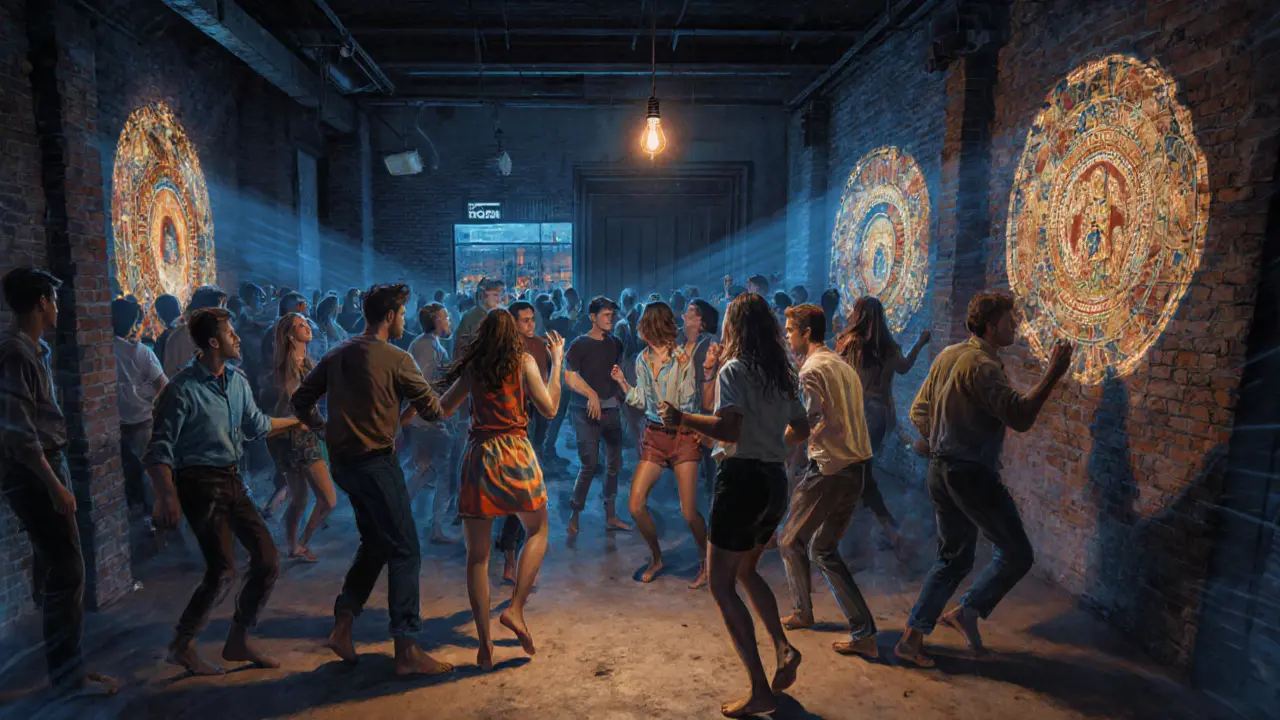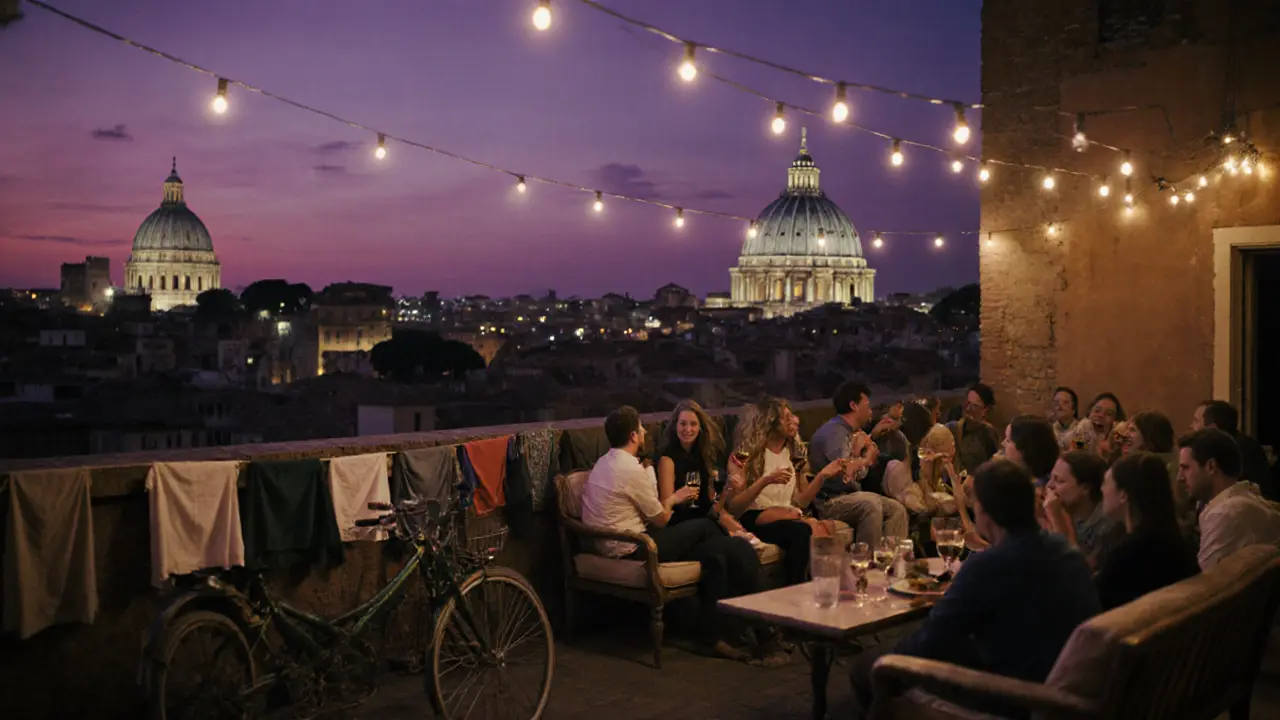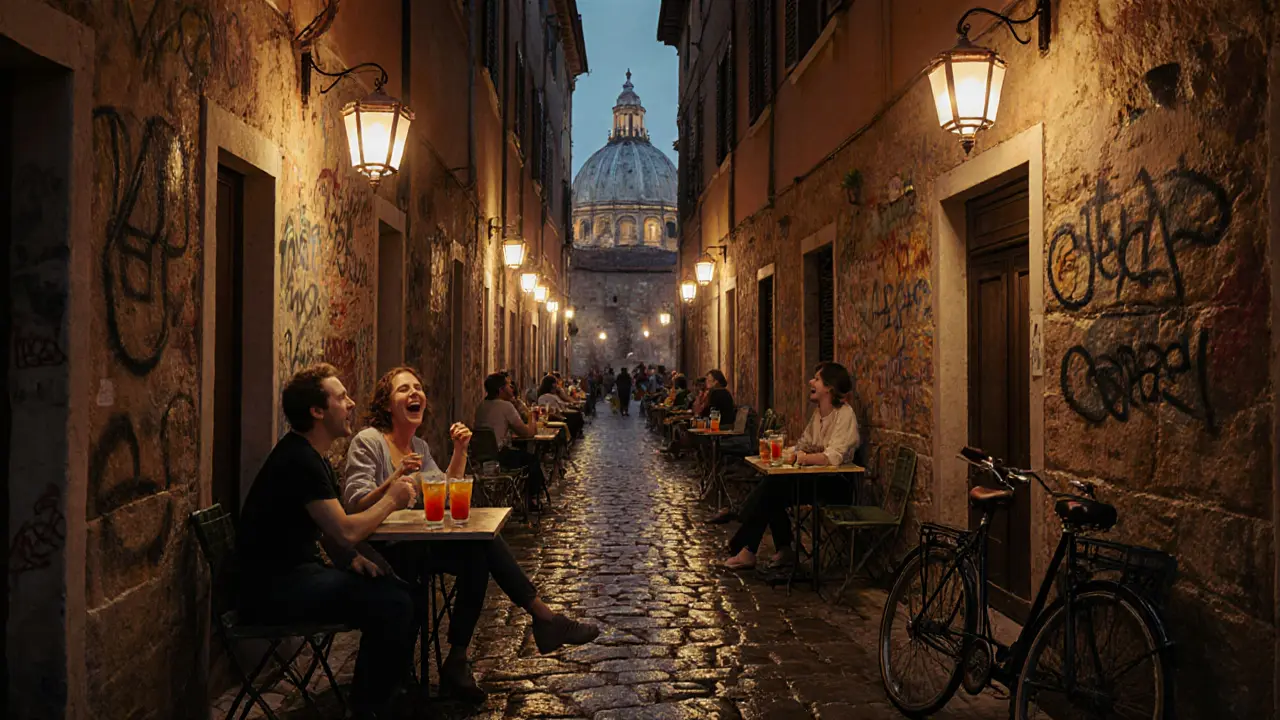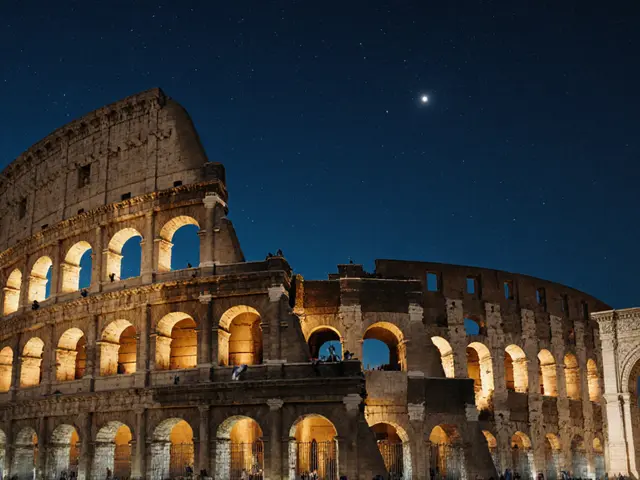Rome isn’t just ruins and pasta. When the sun goes down, the city wakes up in a way most tourists never see. You won’t find neon-lit strip malls or chain clubs here. Instead, you’ll stumble into hidden courtyards where jazz plays over wine glasses, underground basements pulsing with techno, and rooftop terraces where the Colosseum glows in the distance. This isn’t just a night out-it’s a passport to the real Rome.
Where the locals go after 10 PM
If you want to party like a Roman, skip the tourist traps near Piazza Navona. Head to Trastevere after 11 PM. The streets here turn into open-air lounges. Locals sip Aperol spritzes at tiny bars like La Palma, where the bartender knows your name by the third round. It’s not fancy-no velvet ropes, no cover charges-but the energy is electric. People dance on sidewalks, sing along to Italian classics, and never check their phones.
Just down the street, Bar San Calisto has been open since 1956. No menu. Just ask for ‘un bicchiere di vino rosso’ and they’ll pour you something bold and cheap. The walls are covered in decades of graffiti, napkins, and concert tickets. This isn’t a bar-it’s a time capsule.
The club scene: underground, not overpriced
Rome’s best clubs don’t advertise. They’re in old warehouses, converted churches, or behind unmarked doors. Ex Dogana in Ostiense is one of them. Once a customs warehouse, now it’s the city’s most respected techno venue. No logo. No website. You find it by word of mouth. The sound system is brutal. The crowd? Mostly Italians in their late 20s to 40s. No tourists. No Instagram posing. Just pure, sweaty, bass-heavy music until 6 AM.
For something more experimental, try La Pelanda in Testaccio. It’s part art gallery, part club. DJs spin vinyl sets while projections of ancient Roman mosaics swirl on the walls. It’s not for everyone-but if you’ve ever wanted to dance under a 2,000-year-old fresco, this is your spot.
Rooftops with a view
Want to sip a cocktail with the Vatican dome behind you? Head to La Terrazza del Gianicolo. It’s not the fanciest, but it’s the most honest. You climb a narrow stairway past laundry lines and old bikes, and suddenly-you’re above the city. The view stretches from St. Peter’s to the Tiber. The music? A curated mix of Italian pop and lo-fi beats. Drinks start at €8. No dress code. No bouncer judging your shoes.
Another favorite: Il Palazzetto near Piazza del Popolo. It’s a rooftop garden with fairy lights, vintage sofas, and a DJ spinning 90s R&B. Locals bring their own wine. Tourists buy bottles. Either way, you end up talking to strangers who become friends by midnight.

Bars that don’t close
Not every night ends with a club. Some end with espresso and a cigarette. Bar del Cinghiale in Monti opens at 7 PM and doesn’t shut until 3 AM. It’s a wine bar disguised as a deli. You order a glass of Montepulciano, pick a cured meat from the counter, and sit at a wooden table with a group of strangers who all know each other. No one leaves alone.
For late-night snacks, Supplizio near Campo de’ Fiori serves fried risotto balls stuffed with mozzarella and ragù until 2 AM. Eat one while standing at the counter. It’s the unofficial Roman nightcap.
What to expect (and what to avoid)
Rome’s nightlife is wild-but not chaotic. There’s no brawling. No drunken tourists yelling in English. People here know how to have fun without being loud. You’ll notice the difference right away.
Don’t go to clubs that charge €20+ cover just because they’re near the Pantheon. Those are tourist traps. The real spots? They charge €5-€10, if anything at all. Some don’t even have a door. You walk in, say ‘buonasera,’ and you’re in.
Also, don’t expect 24/7 partying. Romans don’t party until 5 AM because they have to work the next day. Most clubs close by 3 AM. That’s normal. That’s real.
When to go
Weekends are packed-but not in a bad way. Friday and Saturday nights are when the city breathes. If you want something quieter, try Wednesday or Thursday. The crowds are thinner, the music is louder, and the locals are more relaxed.
Summer is magic. The heat lingers, the streets stay open late, and outdoor cinema nights pop up in piazzas. In September, the crowds thin out but the energy doesn’t. October brings wine festivals. November? Still lively-just colder. Bring a jacket.

How to get around
Rome’s metro doesn’t run after midnight. Taxis are expensive. The best way? Walk. Most hotspots are within 20 minutes of each other. Trastevere to Testaccio? 25 minutes. Piazza Navona to Monti? 15. You’ll see more of the city on foot than in a cab.
If you’re going farther, use the night bus. Line N10 runs from Termini to Trastevere. Line N62 goes to Ostiense. They’re reliable. They’re cheap. And they’re full of people who just finished their night out.
What to wear
No suits. No flip-flops. Romans dress smart-casual. Jeans, a nice shirt, clean sneakers. A leather jacket if it’s cool. You don’t need to look like you’re going to a gala. You just need to look like you care.
Men: Skip the shorts. Even in July. Women: Heels are fine, but don’t wear them if you’re walking cobblestones all night. Flat boots or loafers are smarter.
Final tip: Be curious, not loud
Rome doesn’t reward tourists who demand attention. It rewards those who listen. Ask the bartender what’s good tonight. Let someone pull you into a conversation. Follow the music down an alley. Say yes to the stranger who invites you to a rooftop party.
This isn’t a checklist. It’s a vibe. And the best night in Rome isn’t the one you planned. It’s the one you stumbled into.
Is Rome nightlife safe for tourists?
Yes, but only if you stay aware. Rome’s nightlife is generally safe, especially in popular areas like Trastevere, Monti, and Testaccio. Avoid isolated streets after 2 AM, don’t flash cash or expensive phones, and trust your gut. Pickpockets exist, but they’re rare in busy clubs. Stick to well-lit areas and use the night buses if you’re heading back far.
What’s the average cost for a night out in Rome?
You can have a full night for €20-€40. A drink at a local bar costs €5-€8. Club entry is usually €5-€15, sometimes free before midnight. Food like supplì or pizza al taglio runs €3-€6. Taxis or night buses add €5-€10. Skip the tourist bars near the Spanish Steps-they charge €15 for a glass of Prosecco.
Are there English-speaking DJs in Rome clubs?
Most DJs in Rome are Italian, and the music is mostly Italian or international electronic. You won’t hear much English pop or hip-hop in underground spots. But that’s the point. The vibe is about atmosphere, not language. If you want English-language music, head to larger venues like Live Club or Parco della Musica, but expect higher prices and bigger crowds.
Can I go clubbing in Rome if I’m under 18?
No. The legal drinking age in Italy is 18, and most clubs enforce this strictly. Even if you look older, ID is common-especially after 11 PM. Some bars might let you in without checking, but clubs won’t. Don’t risk it. Try rooftop bars or wine lounges instead-they’re more relaxed about age.
What’s the best time to arrive at a Rome club?
Don’t show up before midnight. That’s when the real crowd rolls in. If you arrive at 10 PM, you’ll be sitting alone. Wait until 11:30 or 12:30. That’s when the music kicks up, the room fills, and the energy changes. Clubs in Rome aren’t about early birds-they’re about late-night immersion.
Do I need to book ahead for Rome clubs?
Usually not. Most places don’t take reservations. Walk in, pay at the door, and go. The only exceptions are big events-like New Year’s Eve or summer festivals. For those, check Instagram pages of the venues. But for regular nights? Just show up. The line outside is the best indicator of whether it’s worth it.





